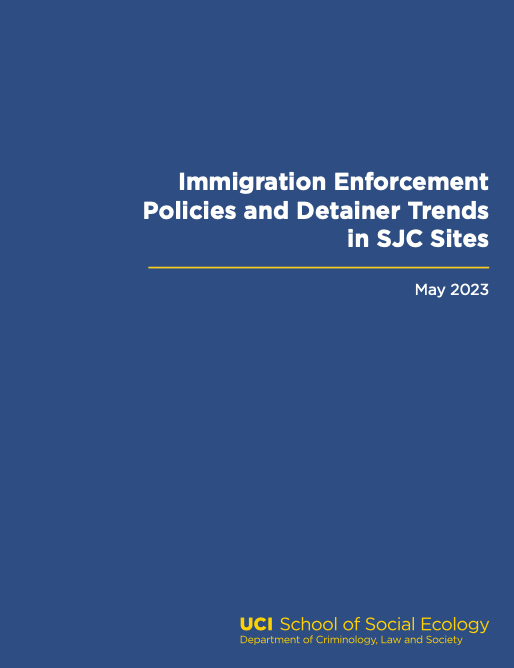Implementation Guide
Immigration Policing Racial and Ethnic Disparities May 23, 2023
Immigration Enforcement Policies and Detainer Trends in SJC Sites
The Safety and Justice Challenge (SJC) was launched by the MacArthur Foundation in 2015 to assist local criminal justice systems in reducing their jail populations and advancing racial equity. To date, MacArthur has supported a total of 57 cities and counties1, which comprise a national network of local criminal justice systems committed to reducing the footprint of the justice system. While ameliorating disparities and social inequalities permeate recent justice policies, these efforts coincide with a rise in anti-Latino/a rhetoric and the evolution of anti-immigration measures. Anti- Latino/a rhetoric associated with anti-immigrant sentiment is not new; in fact, scholars have noted that historically, racial scripts of Mexicans and Mexican Americans living in the United States have included depictions of noncitizens and individuals undeserving of resources (Molina, 2014). Historically, immigration policy has fluctuated in response to labor demand and anti-immigrant sentiment (e.g., Molina, 2014; Massey, 2009). Most recently, there has been a devolution of federal immigration enforcement to localities, which has led to anti-immigration campaigns and the introduction of approximately 1,500 local anti-immigration ordinances in state and local legislatures (Koulish, 2010, p.138-139). Secure Communities, an example of immigration devolution, was a 2008-to-20212 Department of Homeland Security (DHS) initiative requiring the Federal Bureau of Investigation (FBI) to share fingerprints with DHS to allow Immigration and Customs Enforcement (ICE) to identify undocumented immigrants. The 287 (g) agreements establish a partnership with federal, state, and local law enforcement agencies to cooperate with federal agencies to remove undocumented individuals.3 Additionally, traffic violations can also be counted as crimes for the purpose of removal (Abrego, Coleman, Martinez, Menjivar, & Slack, 2017). Advocates and academics have recently documented how 287(g) agreements have increased policing in Latino/a neighborhoods and how traffic enforcement is used to investigate legal status (Coleman & Kocher, 2019). Equally concerning is the fact that the devolution of immigration enforcement to interior enforcement has spillover effects on all Latino/as (Aranda, Menjivar, & Donato, 2014).
Robust immigration enforcement by local, state, and federal authorities is currently the backdrop of criminal justice reform efforts. Immigration policies can influence how local law enforcement engages with undocumented populations, which may include Latino/a communities. Immigration enforcement and local-federal cooperation can result in an increase in arrests and detainers. A detainer is an immigration hold request that allows ICE to remove undocumented individuals from federal, state, or local custody. During the Trump Administration, the number of immigration arrests increased from a total of 30,028 in 2016 to 41,328 in 20174 and detainers increased from 85,720 in 2016 to 142,474 in 2017 (Transactional Records Access Clearinghouse). Moreover, anti-immigrant policies persist despite overwhelming evidence that immigrants are less likely to commit crimes than native-born Americans and that communities with a higher proportion of immigrants have lower crime rates (National Academy of Sciences, 2015; Ousey & Kubrin, 2018; Zatz & Rodriguez, 2015).
